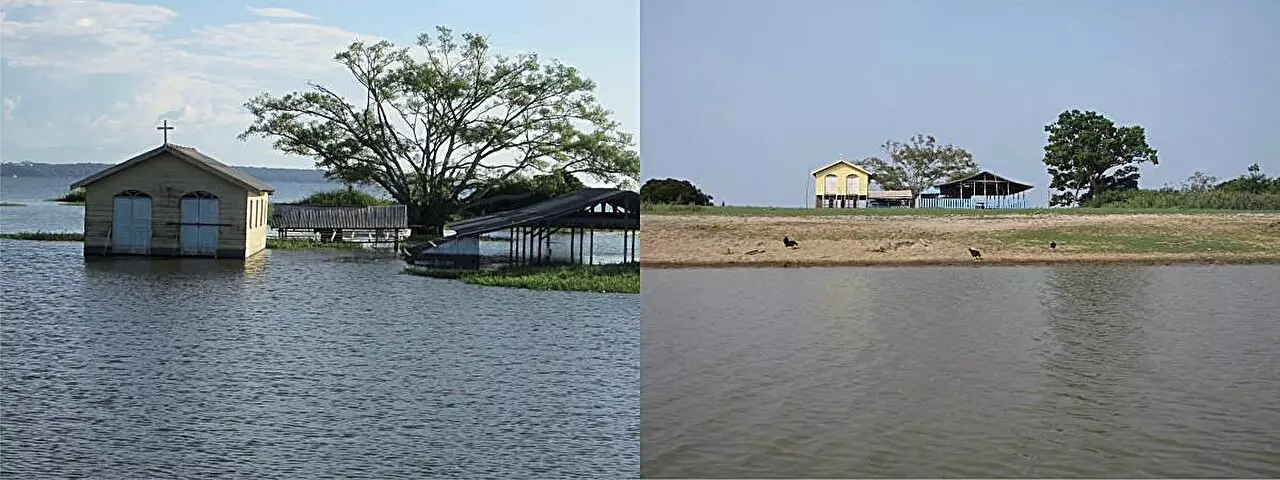The Amazon Rainforest is often referred to as the “lungs of the Earth,” serving a critical role in global carbon cycling and climate stability. Its diverse ecosystems are not only essential for biodiversity but also pivotal in the regulation of greenhouse gases. Recent research conducted by scientists from the University of São Paulo (USP) sheds light on the looming challenges posed by climate change, particularly concerning methane—a potent greenhouse gas with significantly higher warming potential than carbon dioxide.
For decades, the Amazon has been a battleground between conservation efforts and industrial exploitation, but the consequences of climate extremes, specifically elevated temperatures and variable rainfall, are amplifying the urgency for further investigation and action. With the potential alteration of methane dynamics in various habitats within the region, understanding these shifting ecological relationships has never been more critical.
A comprehensive study recently published in the journal *Environmental Microbiome* reveals that climate change could lead to a severe uptick in methane emissions from the Amazon’s floodplains, while simultaneously reducing the capacity of upland forests to act as methane sinks by nearly 70%. This presents a dual threat: on one hand, there is a pronounced increase in methane-producing microorganisms in inundated areas, and on the other, a dramatic diminishment of methane consumption in upland environments.
During a controlled 30-day experiment, researchers under the guidance of Professor Tsai Siu Mui, including lead author Júlila Brandão Gontijo, investigated the impacts of increased temperatures and humidity on microbial communities in the Amazon. They monitored soil samples from both floodplains and upland forests, measuring the abundance of methane-producing and consuming microbes utilizing advanced genetic techniques. The results were illuminating and troubling, signifying that climate change could fundamentally disrupt the delicate balance of greenhouse gas cycling across these vital ecosystems.
The Amazon’s floodplains, which experience prolonged periods of inundation, contribute to a staggering 29% of global wetland methane emissions. The study indicated that even without significant observable changes in methane emissions patterns, the abundance of methanogenic microorganisms surged in flooded conditions. To make matters worse, the upland forests displayed a sharp decline in their ability to consume methane when subjected to extreme heat and dry conditions. This inconsistency highlights the varying adaptability of microbial communities to climate extremes, raising concerns about future greenhouse gas emissions from the region.
What is particularly alarming is the researchers’ conclusion that the floodplain microbiome is resilient, adapting to the stresses imposed by climatic changes, whereas the upland forest microbiome appears more vulnerable. This imbalance could exacerbate greenhouse gas emissions from the Amazon, with paradoxical outcomes that could undermine the region’s role as a carbon sink, compounding the global climate crisis.
The implications of these findings extend far beyond the borders of Brazil. With methane emissions contributing substantially to global warming, any increase resulting from the Amazon’s changing ecosystems could have catastrophic effects worldwide. As atmospheric methane levels have seen an alarming rise of 18% over the past 40 years, it becomes clear that an understanding of regional changes is critical for formulating an effective global response to climate change.
As a result, researchers emphasize the urgent need for robust conservation and management policies designed to preserve the delicate microbial ecosystems of the Amazon Rainforest. With the potential for large-scale alterations in methane dynamics, the importance of well-informed public policies grounded in scientific research cannot be understated.
Moving forward, further research is necessary to understand the underlying mechanisms driving methane cycling across diverse ecosystems in the Amazon. The identification of methanotrophic microorganisms in previous findings provides a glimmer of hope; these organisms possess the capability to utilize methane as an energy source and may play a critical role in offsetting emissions.
Field studies and laboratory-based experiments are essential for developing deeper insights into these complex biogeochemical processes. As scientists continue to unravel the intricacies of microbial interactions and their implications for greenhouse gas dynamics, it is crucial that such knowledge informs decision-makers tasked with crafting policies aimed at mitigating climate change impacts.
The intersection of microbial ecology, climate change, and global environmental policy presents a formidable challenge that mandates urgent attention. Understanding the dynamics at play in the Amazon Rainforest is vital not only for the future of this iconic biome but for the planet as a whole.



Leave a Reply